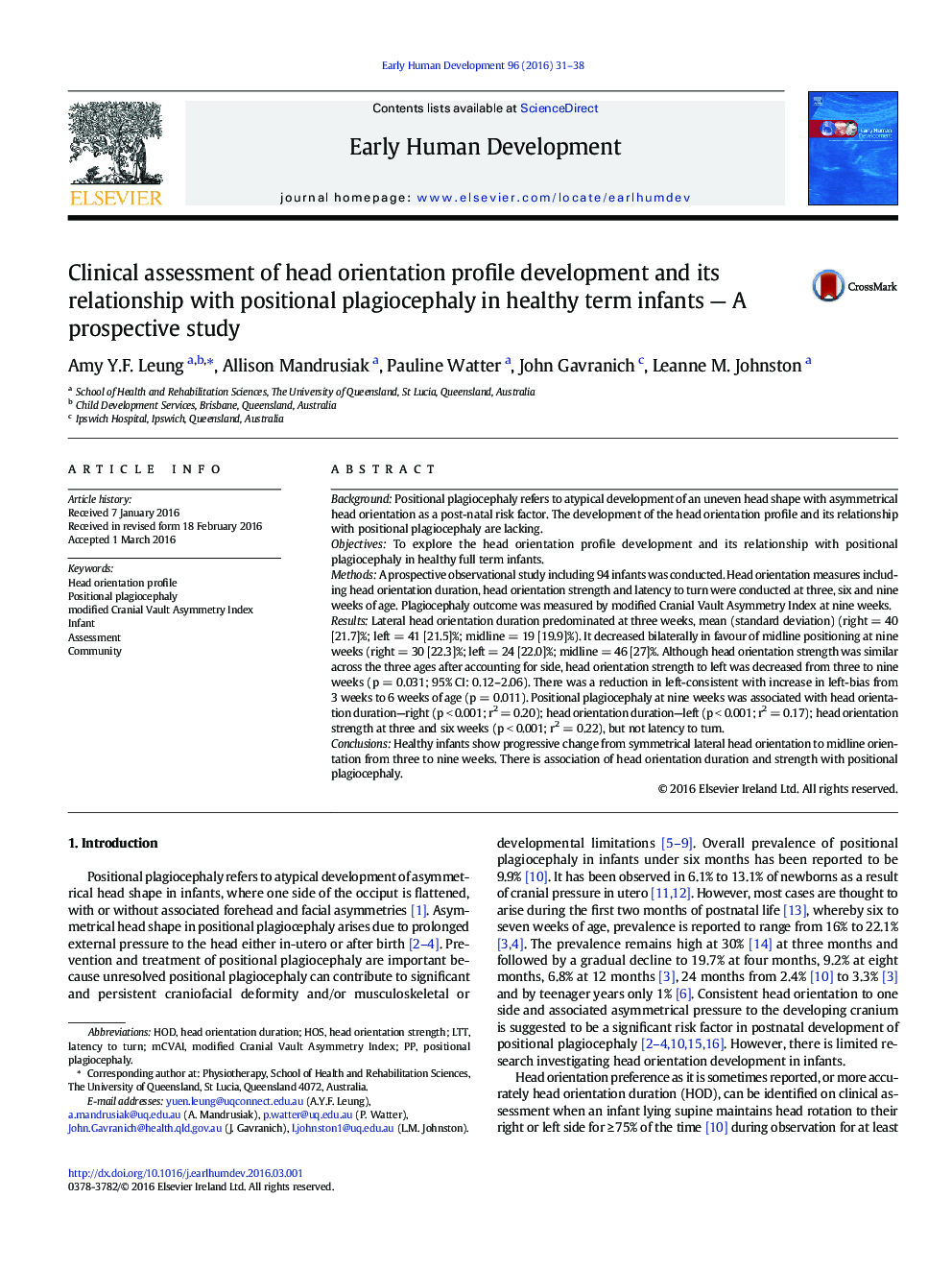| Article ID | Journal | Published Year | Pages | File Type |
|---|---|---|---|---|
| 3916452 | Early Human Development | 2016 | 8 Pages |
•Head orientation profile was expressed in three variables: head orientation duration, head orientation strength and latency to turn.•Head orientation in young infants develops from lateral to midline over the first nine weeks of life.•Asymmetrical head orientation was associated with larger head circumference, being first born and a low APGAR.•Positional plagiocephaly at nine weeks was predicted by head orientation duration and strength at three and six weeks.•Head Orientation Risk Indicator Form was developed for clinical monitoring of young infants at risk of developing plagiocephaly.
BackgroundPositional plagiocephaly refers to atypical development of an uneven head shape with asymmetrical head orientation as a post-natal risk factor. The development of the head orientation profile and its relationship with positional plagiocephaly are lacking.ObjectivesTo explore the head orientation profile development and its relationship with positional plagiocephaly in healthy full term infants.MethodsA prospective observational study including 94 infants was conducted. Head orientation measures including head orientation duration, head orientation strength and latency to turn were conducted at three, six and nine weeks of age. Plagiocephaly outcome was measured by modified Cranial Vault Asymmetry Index at nine weeks.ResultsLateral head orientation duration predominated at three weeks, mean (standard deviation) (right = 40 [21.7]%; left = 41 [21.5]%; midline = 19 [19.9]%). It decreased bilaterally in favour of midline positioning at nine weeks (right = 30 [22.3]%; left = 24 [22.0]%; midline = 46 [27]%. Although head orientation strength was similar across the three ages after accounting for side, head orientation strength to left was decreased from three to nine weeks (p = 0.031; 95% CI: 0.12–2.06). There was a reduction in left-consistent with increase in left-bias from 3 weeks to 6 weeks of age (p = 0.011). Positional plagiocephaly at nine weeks was associated with head orientation duration—right (p < 0.001; r2 = 0.20); head orientation duration—left (p < 0.001; r2 = 0.17); head orientation strength at three and six weeks (p < 0.001; r2 = 0.22), but not latency to turn.ConclusionsHealthy infants show progressive change from symmetrical lateral head orientation to midline orientation from three to nine weeks. There is association of head orientation duration and strength with positional plagiocephaly.
